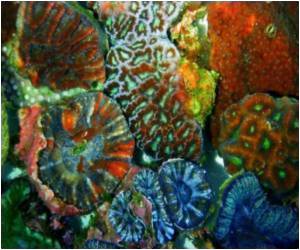Wild finches in the Galapagos Islands used cotton balls, treated with mild pesticides and set out by biologists of University of Utah, to help build their nests.

"Self-fumigation is important because there currently are no other methods to control this parasite," blood-sucking maggots of the nest fly Philornis downsi, says University of Utah biology doctoral student Sarah Knutie, the study's first author.
Clayton says the parasitic nest fly may have invaded Ecuador's Galapagos Islands via ships and boats from the mainland at an unknown time and "showed up in large numbers in the 1990s. So the birds have no history with these flies, which is why they are sitting ducks. From the perspective of the birds, these things are from Mars."
Knutie says the flies now infest all land birds there, including most of the 14 species of Darwin's finches, two of which are endangered: fewer than 100 mangrove finches remain on Isabela Island, and only about 1,620 medium tree finches exist, all on Floreana Island. Nest flies have been implicated in population declines of Darwin's finches, including the two endangered species.
Clayton says the pesticide – permethrin – is safe for the birds: "It might kill a few other insects in the nest. This is the same stuff in head-lice shampoo you put on your kid. Permethrin is safe. No toxicologist is going to argue with that. The more interesting question is whether the flies will evolve resistance, as human head lice have done."
Clayton believes that will not happen if treated cotton is placed only in the habitats of endangered finches, not others.
Advertisement
Can Other Species Fumigate Themselves?
Source-Eurekalert









